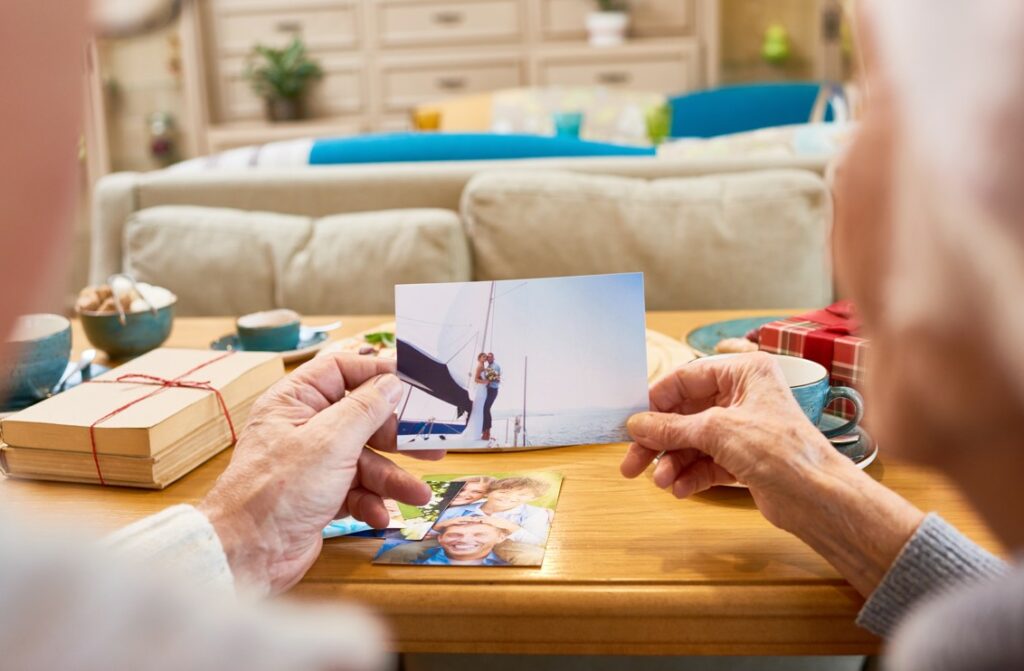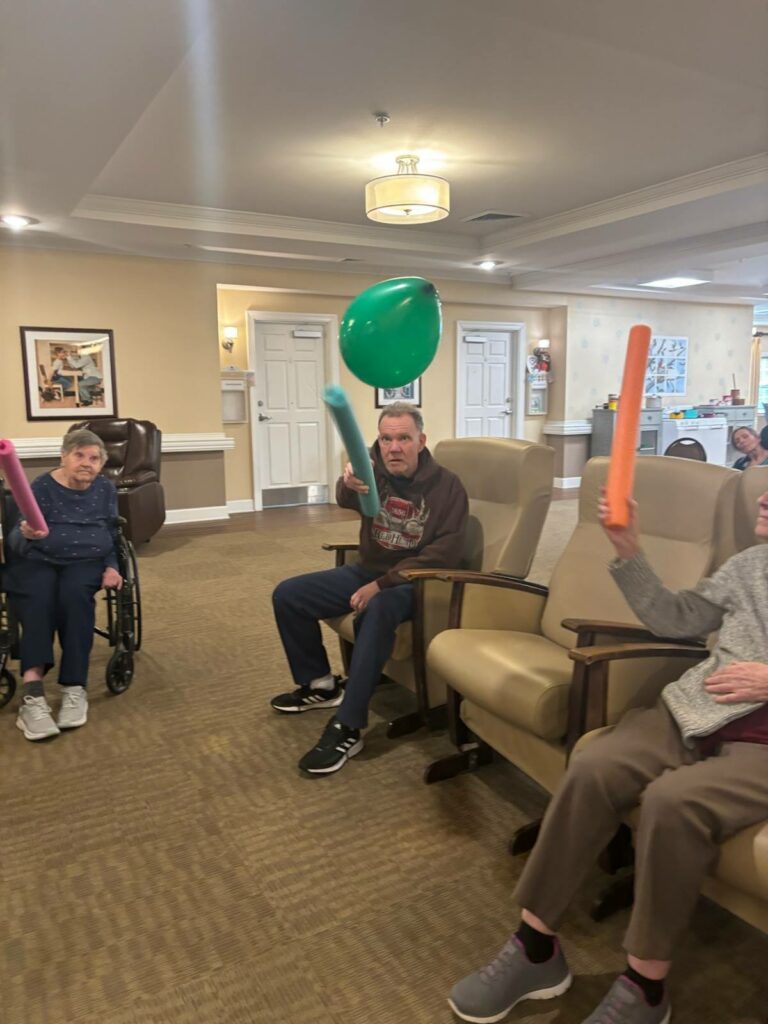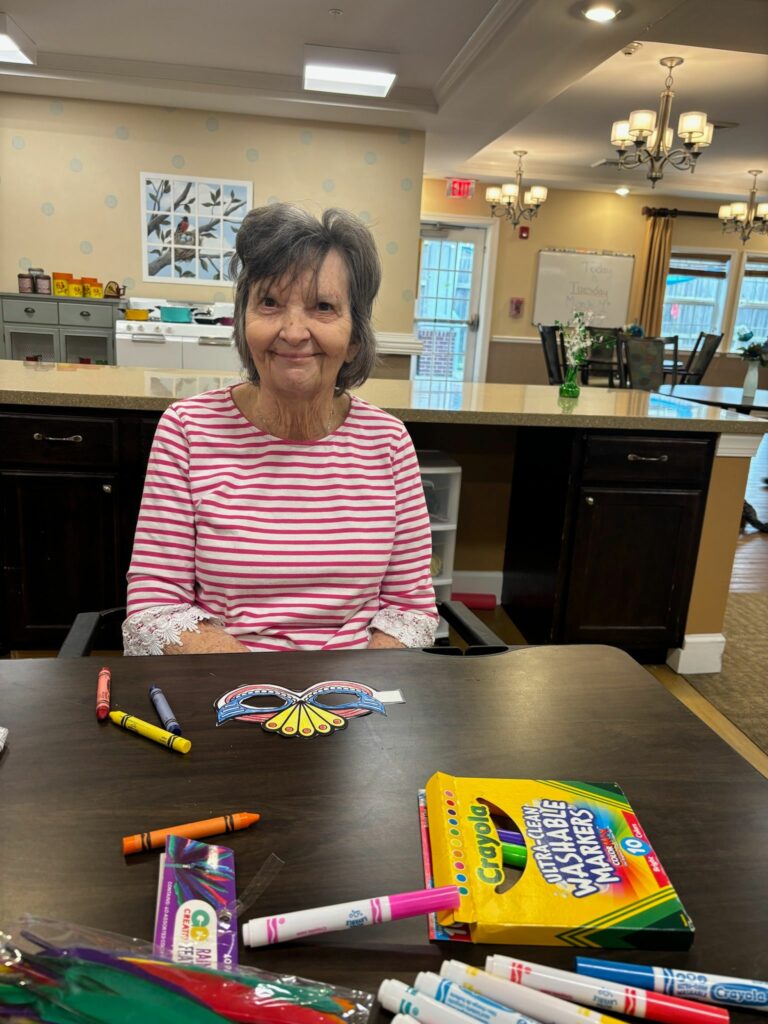Redefining What it Means to Be Active When the Mind Shifts
When someone we love is diagnosed with dementia, it’s natural to shift our expectations—about what their life will look like, what they’ll be able to do, and how we’ll relate to them moving forward. But too often, the term “active life” is the first to be silently erased.
We associate being active with independence, sharpness, autonomy—qualities that dementia may compromise over time. Yet that assumption misses something essential:
Activity is not a checklist. It’s a form of connection.
And people living with dementia are still deeply capable of connection—physical, emotional, and spiritual.
What Does “Being Active” Mean When Cognition Changes?
Being active with dementia doesn’t require remembering instructions or initiating tasks. It means:
- Responding to rhythm
- Feeling movement in the body
- Recognizing beauty in a flower or color
- Reacting emotionally to music or laughter
- Engaging through routine, touch, or trust
In fact, studies in neuropsychology show that while declarative memory (facts, events) deteriorates, procedural memory (habitual actions, muscle memory, and sensory-emotional recognition) often remains intact far longer. That means the right kinds of activity—those grounded in the body and the senses—can still offer profound joy and comfort.
How to Support an Active Life at Any Stage of Dementia
Whether your loved one is in the early stages or navigating more advanced cognitive decline, and whether they’re at home or in a memory care community, here are ways to reimagine what it means to “stay active”:
- Lead with the senses, not the mind
- A spritz of their favorite perfume
- A soft textured blanket
- A familiar song from their youth
These sensory cues stimulate calm, attention, and memory pathways without relying on verbal or logical thinking.
- Introduce gentle, rhythmic movement
- Walks with consistent pacing
- Swaying or tapping to music
- Simple hand movements during daily care
These activities activate coordination, reduce agitation, and support emotional regulation.
- Honor the body’s memory
Procedural memory can preserve the ability to fold towels, stir a pot, button a shirt, or sweep a surface—long after language and logic have faded.
These small acts are not busywork—they are identity work.
- Redesign routine as ritual
The difference between a routine and a ritual is intention. Lighting a candle, setting the table together, saying a prayer at the same time each day—these are anchors in a shifting world.
- Allow quiet to be active, too
Sitting together in stillness, watching birds from the window, holding hands during a soft playlist—these are moments of deep connection. Activity, in dementia care, often happens beneath the surface.
💬 Language, Mobility, and Emotional Shifts: It’s Not Just About Memory
Not all dementia presents as forgetfulness. Some people retain memory but experience:
- Language loss (aphasia)
- Disinhibition or mood swings
- Rigid motor symptoms (as in Lewy Body or Parkinsonian dementias)
- Disconnection from time, place, or even self-perception
This makes flexibility in activity design essential. What works one week may not work the next—and that’s okay. The goal is not mastery, but presence.
Your loved one is not defined by what they’ve lost, but by what still stirs them, even in silence.
🏡 And When the Time Comes for More Support
Whether you’re caring at home or exploring the next step, communities like The Goldton at Spring Hill exist not just to supervise, but to elevate everyday moments.
We offer an approach that goes beyond programming and enters into curated, person-centered experiences—where joy is discovered not in outcomes, but in the feeling of being seen and valued.
The question isn’t “Can they still be active?”
It’s “What kind of activity still reaches them, supports them, and reminds them they belong?”
Because no matter the diagnosis, they still do.
And in the right hands, with the right care, they don’t just fade.
They still shine.

So, what makes a routine “purposeful” for someone with cognitive decline?
- It’s sensory, not intellectual.
Brushing a textured surface. Smelling citrus before a meal. Listening to the rustle of leaves while seated outdoors. These tiny cues activate neural pathways that are still intact—particularly those linked to emotion and procedural memory.
- It’s rhythmic.
The brain thrives on predictable patterns. Starting the day with a familiar song, always having tea at the same hour, or folding towels at sunset can reinforce safety and temporal awareness—without needing a clock.
- It’s co-created, not imposed.
Even with limited verbal skills, individuals can often gesture, nod, or respond to choices. Presenting two shirts instead of a full closet, or two art supplies instead of ten, helps maintain agency without overwhelming.
- It gently blends stimulation with simplicity.
“Think fast” trivia games may be too much—but “Finish the line” lyrics? That’s brilliance. It invites memory without pressure. Likewise, aromatherapy, repetitive crafts, and guided storytelling all provide light cognitive engagement with emotional payoff.
Innovation in dementia care isn’t about inventing new tasks—
it’s about curating familiar experiences in thoughtful, repeatable ways.
This type of intentional routine design respects the person behind the diagnosis. It says:
“You still belong to this moment. And this moment belongs to you.”
How to Preserve a Loved One’s Identity Through Everyday Interactions
🧠 1. Use language that reflects who they are, not just what they need
When you say, “Time to eat,” it’s a task.
But when you say, “Want to help me with your famous breakfast?”, you’re speaking to memory, role, and personality.
Identity is embedded in how we’re spoken to. Choose words that reflect who they’ve always been.
🧢 2. Maintain personal style and grooming rituals
Fashion and grooming aren’t superficial. They’re extensions of self.
- Let them choose between two outfits—ideally ones aligned with how they used to dress.
- Apply their favorite lipstick, or style their hair the way they used to request it.
- Use familiar scents, accessories, or jewelry, even if it’s just symbolic.
Consistency in self-presentation reinforces inner identity—even when cognitive clarity wavers.
📖 3. Keep their life story alive in the present tense
Photos, music, familiar recipes, hometown maps, even phrases they used to say—these are not just “memories.”
They are active fragments of identity that can be integrated into conversation, space, and activities.
- Instead of saying “remember this?” (which can frustrate), try:
“That looks like your old garden hat—still your style!” - Or: “This smells like your Sunday chicken—how you used to add lemon.”
Identity thrives when it’s invited, not tested.
🎵 4. Protect the quirks
The way they always sang while washing dishes. Their favorite radio host. That odd combination of snacks they loved.
These details may seem irrelevant in a care setting, but they are deeply anchoring.
Ask yourself: What made them uniquely them? Then keep those elements—however small—in the daily rhythm.
Preserving identity in dementia isn’t about fixing memory—it’s about honoring what still speaks without needing to be recalled.
Every small, thoughtful act—spoken, seen, or shared—becomes a mirror.
And in that mirror, your loved one can still catch a glimpse of themselves.


Let the Light In—And Let It Continue to Shine
Dementia may change the rhythm of life, but it doesn’t dim the spark that still lives in each person. What truly matters isn’t what’s been forgotten, but what remains: the capacity to feel joy, express beauty, connect with others, and be seen for who they are—not who they used to be.
At The Goldton at Spring Hill, we don’t just provide care—we create experiences that honor identity, nourish the senses, and invite meaning back into the moment, again and again.
We invite you to visit us.
Come see how we help residents shine—brightly, and on their own terms.
Because even when the path changes, the person is still there.
And with the right support, they still shine.










